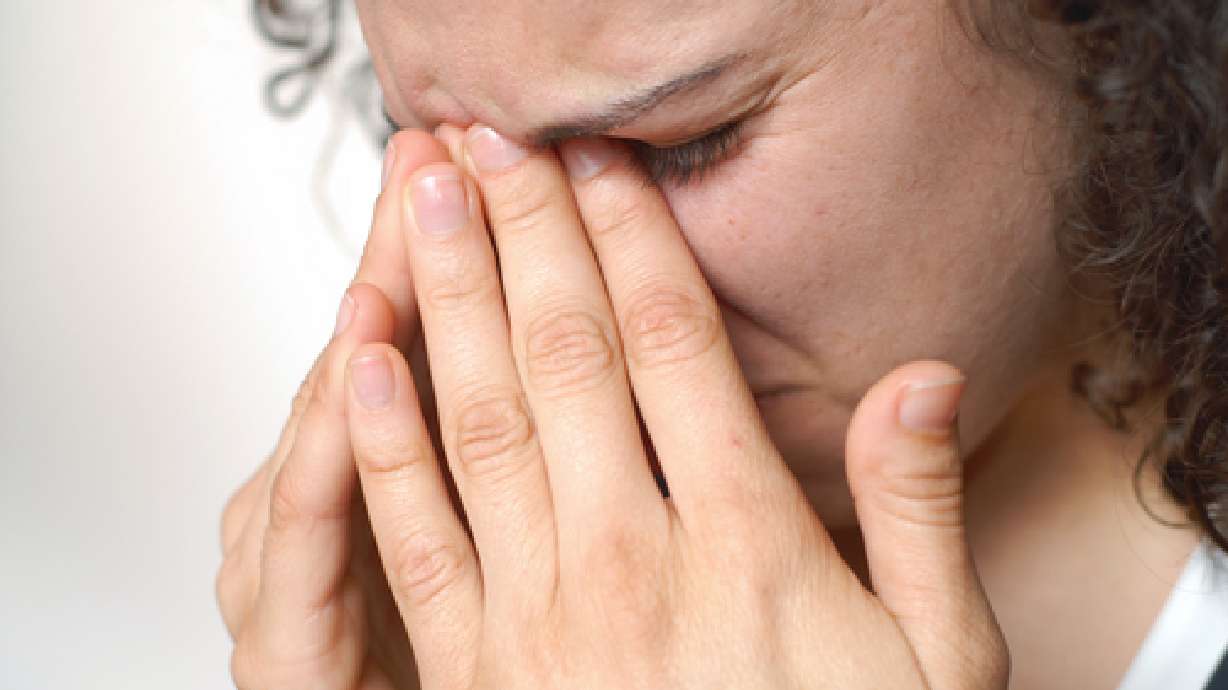Estimated read time: 3-4 minutes
This archived news story is available only for your personal, non-commercial use. Information in the story may be outdated or superseded by additional information. Reading or replaying the story in its archived form does not constitute a republication of the story.
SALT LAKE CITY — It’s early spring, and you’ve got upper respiratory problems again. Is it just a cold? Maybe allergies? Or is it something more? Here’s what you need to know about sinusitis and how to detect and effectively treat it.
Question:
What is sinusitis and how do I know if I have it?
Answer:

#sinus_chart
As defined by MedicineNet.com, “sinus infections are caused by infections from a pathogenic microorganism (virus, bacterium, or fungus), which grows within a sinus and causes intermittent blockage of the sinus ostium" (hollow, air-filled cavities that make up your airway system).
There are four parts of your sinuses: frontal sinus (in forehead), maxillary sinus (behind cheeks), ethmoid sinus (between the eyes) and sphenoid sinus (deep behind the ethmoids). An infection most often happens when one of these areas get filled with drainage that is not cleared out regularly. As it sits, the drainage allows for growth of bacteria, and thus infection.
Sinus infections can be misleading in that many people, by the time they recognize they need a doctor’s help, have a full-blown sinus infection that can be very difficult to treat. You can also have sinus problems by the very nature of your anatomy, or polyps in the air passageways that block normal drainage.
It is also very common for sinus problems to happen when allergies are a factor. Allergies cause swelling in the nasal passages or create a lot of drainage, which can create pressure and sinus infections.
Not all sinus infections cause a fever, but all sinus infections will always have pressure pain.
Not all sinus infections cause a fever, but all sinus infections will always have pressure pain. Many can confuse a sinus problem with a bad headache. Symptoms include facial tenderness, colored drainage, sore throat, cough, bad breath related to postnasal drainage, and dizziness or lightheadedness.
Treatment for a sinus infection includes:
- Use of decongestants
- Use of allergy medication
- Fluids to keep mucus thin
- Nasal irrigation to keep the nasal passages clear
- Use of over-the-counter pain relievers
- Use of prescribed antibiotics (it is common for some people to be instructed to take antibiotics for an extended period of time)
Ask Nurse Suzy
In people that have a constant problem with their sinuses, advanced medical treatment may be required — such as nasal surgery.
If a sinus infection is left untreated, it can lead to meningitis or encephalitis. So, if you feel like you have a cold you just cannot get rid of, please consider a sinus problem and check with your doctor.
Suzanne Carlile, "Nurse Suzy," has been a nurse since 1982. Her main focus is critical care and nursing education. She holds a master's degree in nursing, is a Certified Emergency Nurse, and a member of NNSDO Intermountain West Chapter.










